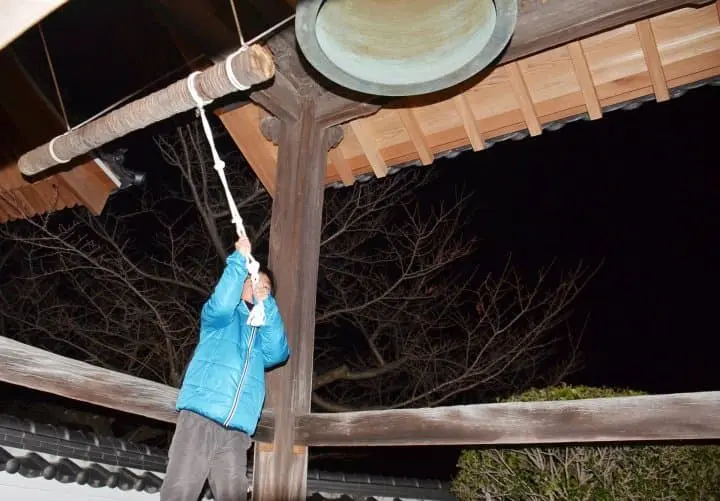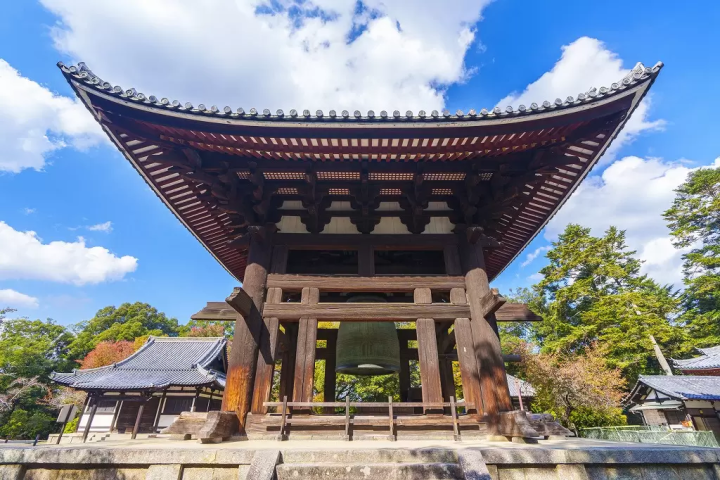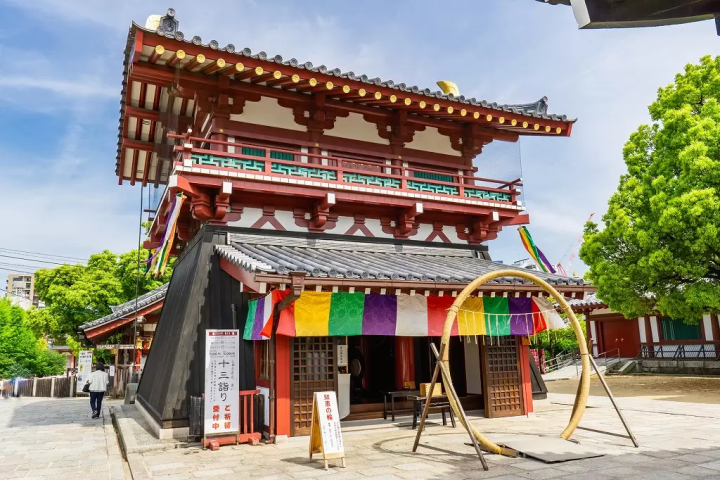Joya-no-Kane (New Year's Eve Bell) - Japanese Encyclopedia

Joya-no-Kane is the custom of ringing a temple bell on New Year's Eve in Japan. Practiced throughout the country, priests and temple visitors ring this symbolic bell 108 times to usher in the New Year. Learn more about this tradition, where to see it, and perhaps try it out yourself!
Joya-no-Kane Guide
1. What is Joya-no-Kane
2. 108 Bell Rings to Welcome the New Year
3. Joya-no Kane in Tokyo
4. Joya-no-Kane in Kyoto and Nara
5. Joya-no-Kane in Osaka
Joya-no-Kane: Ringing the New Year's Bell at Midnight

Photo by Pixta
Joya-no-Kane refers to the annual ringing of bells on the night of New Year's Eve at temples nationwide. In fact, "joya" is one way of saying "New Year's Eve" in Japanese while "kane" stands for "bell."
Watch the video below to listen to the New Year's bell of Chion'in, a famous temple in Kyoto.
↑ Return to the top of article.
108 Bell Rings to Welcome the New Year
According to ancient custom, the bell is typically rung 107 times on December 31 and once more, when the clock strikes midnight on New Year's. Bridging one year to the next, the bell is rung a total of 108 times.
According to the Buddhist teachings, this number represents the 108 worldly desires (*1) that a person experiences throughout the course of their life. When the bell is finally struck for the 108th time, it is believed that you'll be cleansed of your problems and worries from last year.
*1 The concept of 108 worldly desires originates from the Buddhist teachings. These desires refer to the anxiety and hardships caused by material wants.

On the night of New Year's Eve (around 23:00), many temples across Japan customarily ring their bells. Listening to the solemn sound while waiting for the start of another year is a tradition that has existed since ancient times.
Depending on the temple, some may even allow shrine visitors to take turns ringing the bell. If you want to participate, it is advised to show up early as some temples issue tickets in the order of visitors' arrival.
↑ Return to the top of article.
Joya-no Kane in Tokyo
In Tokyo, some places where you can watch are Sensoji Temple in Asakusa, Hongwanji Temple in Tsukiji, and Zenpukuji Temple in Azabu-juban.
↑ Return to the top of article.
Joya-no-Kane in Kansai

Picture by Pixta
Nara's Todaiji Temple and Chion'in in Kyoto are known to have gigantic bells that require the combined force of 17 monks to ring them. These sacred sites are famous places to see and hear this annual spectacle.
Since the ceremony ends after 108 strikes, there are times when throngs of early visitors arriving and participating can cause it to finish sooner than expected. Please try to arrive ahead of time to see this year-end festivity!
At night, the temple may serve beverages like sake or amazake while larger temples may even serve food.
↑ Return to the top of article.
Joya no Kane in Osaka

Photo by Pixta
The Joya no Kane events in Osaka are held at various temples, including the historic Shitennoji Temple and Dainenbutsu-ji Temple, these celebrations attract both locals and visitors.
Shitennoji Temple, one of Japan's oldest temples, features three bells and provides a vibrant setting for the celebration. After the initial 108 strikes, the temple continues to ring its bells, typically until 3 a.m. Many attendees arrive early to join in special rituals and festivities.
Similarly, at Dainenbutsu-ji Temple, participants can find a peaceful environment conducive to reflection and meditation as they await the bell tolls. In addition to sake, the temple also serves delicious red bean soup, making it a lovely spot to warm up while experiencing this unique celebration.
Note that tickets may be required for certain events, so checking in advance is advised for a smoother experience during this remarkable celebration.
ライター兼翻訳者、時にマーケティング調査員の顔も。訪日旅行客向けに東京都内レストランメニューの翻訳データ・ベースの作成や、宿・ホテル情報検索サイトの翻訳も手掛けてきました。旅行と食材研究が趣味です。



































![[Coupon Available] Attention Overseas Winter Sports Fans! Nagano's Sports Depot Has Evolved](https://resources.matcha-jp.com/resize/720x2000/2026/01/05-254819.webp)
![[2 hours from Tokyo ] 10 Quiet and Breathtaking Views of Mount Fuji in Yamanashi Hokuto City , Yamanashi - Part 2](https://resources.matcha-jp.com/resize/720x2000/2025/12/16-253037.webp)

![[Reopening in March 2026] Ikoma Sanjo Amusement Park Park, 45 minutes from Osaka , with free admission](https://resources.matcha-jp.com/resize/720x2000/2024/08/28-194409.webp)